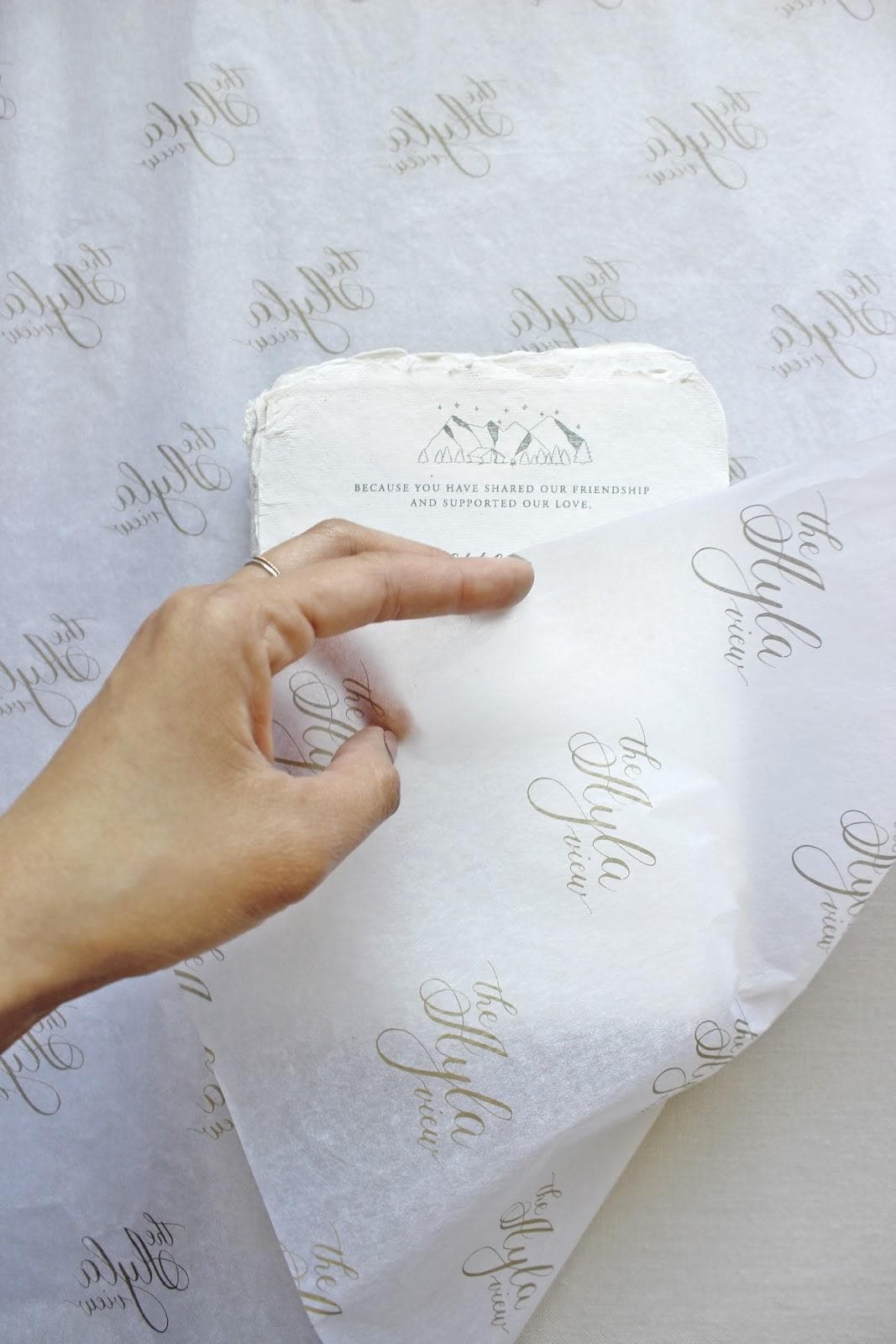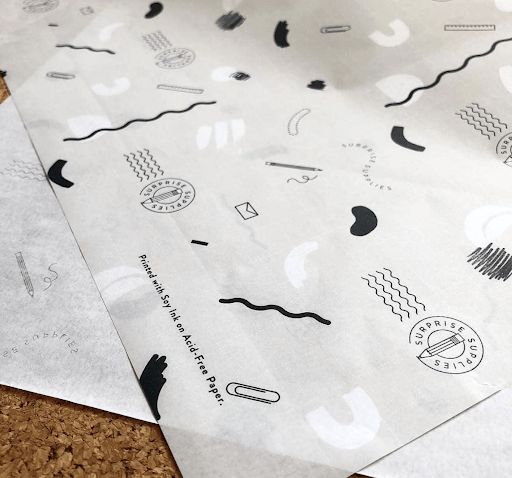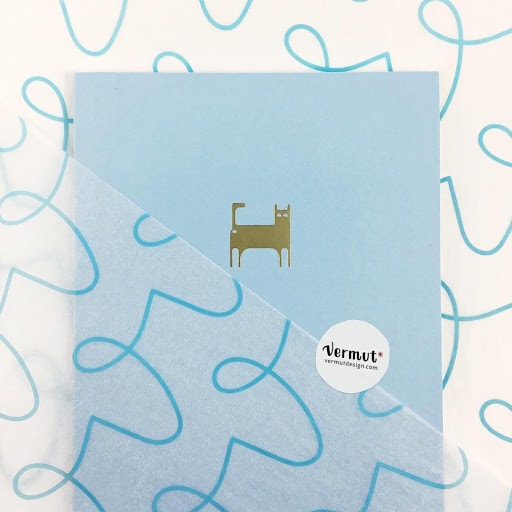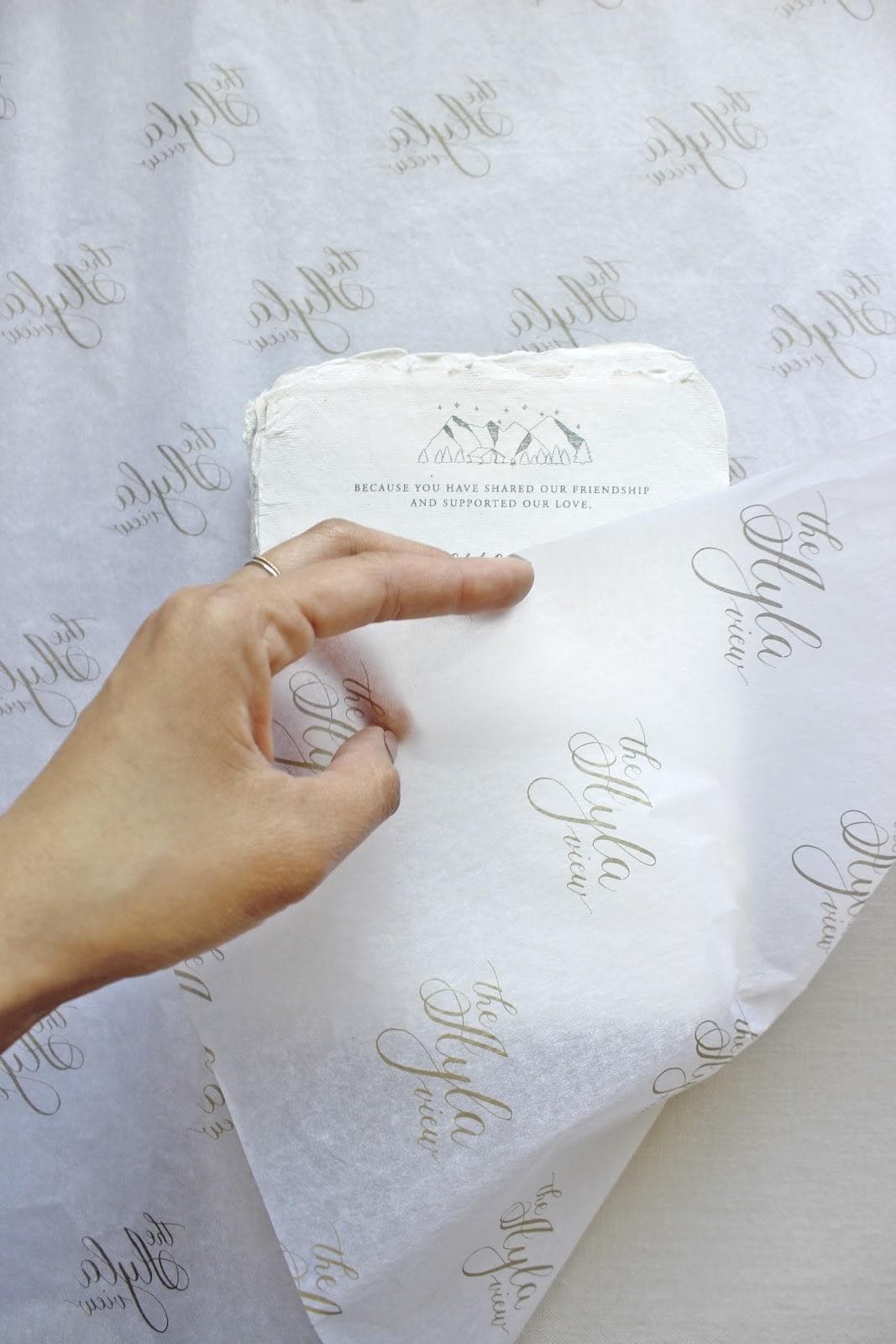At noissue, we know a fair bit about paper – after all, we literally built a business around it! We’ve spent a lot of figuring out how we can create the most affordable and highest quality paper products for businesses.
For customers who are new to custom paper goods, we get a lot of questions about GSM and paper weight. Are they the same thing? What does GSM stand for? How does it relate to product quality?
In this guide, we’ll give you a quick intro to GSM and how it relates to our custom tissue paper. We’ve also added in a few handy design tips to help you decide which GSM paper weight is right for you!

What Does GSM Mean?
The term ‘GSM’, which stands for ‘grams per square meter’, is a unit of measurement for paper products. Rather than referring to sheet size, GSM measures only the weight of a sheet of paper. Put simply, the higher the GSM, the thicker the paper will be.
The GSM paper weight chart measures from light tissue paper (such as noissue’s 17GSM custom tissue) up to heavier weight designs such as card.
Why Does GSM and Paper Weight Matter?
GSM is the most commonly-used unit across regions for measuring paper thicknesses. So, it’s important that businesses understand what this means when ordering printed products.
It doesn’t matter whether you are organizing flyers, business cards, or custom packaging materials. It’s very likely that GSM will be how printers categorize the type of paper used in the manufacturing process.
So, if you don’t understand the difference between GSM scores, you could end up ordering the wrong paper thickness for your needs. This is a pretty costly mistake, especially when you are a small business!
For example, let’s say you were getting invitations printed for a corporate event. 110 GSM paper is about the same as regular printer paper, while 340 GSM paper and above is a thick card. Naturally, the latter will give off a much more premium vibe. Regular paper is pretty flimsy, and runs the risk of making invitations look cheap.
So, choosing the right weight of paper for your printing needs is vital. It plays a big role in shaping your customers’ perception of your business!
The GSM Guide to Paper Thickness
The GSM paper weight chart below will give you a better idea of how different thicknesses of paper are used:
35 – 55 GSM paper – The thinnest form of regular paper, mostly used for newspapers.
90 – 120 GSM paper – The average weight of regular office paper or copy paper.
130 – 250 GSM paper – The weight most commonly used for promotional posters.
260 – 300 GSM paper – Thicker but still bendable card weight which works well for high-end brochures or magazines.
350 – 450 GSM paper – The heaviest and most rigid card which will easily stand under its own weight, and so much gets used most commonly for stationery and invitations.

How we use GSM in noissue custom tissue paper
Some commentators take higher GSM paper weights to mean high-quality paper. However, this isn’t the right use of GSM. Just because a ream of paper carries a low GSM score (meaning it’s thinner) this doesn’t mean that it’s lower quality – it just gives a different indication of what it should be used for.
For example, if you were wanting custom paper for gift wrapping, you would need a very low GSM paper weight to get the required thinness. Would you be able to use a 350 GSM piece of card for gift wrapping? Definitely not!
noissue offers two GSM weights for our custom printed tissue paper: 17GSM and 28 GSM. All of our tissue paper is acid-free (meaning it doesn’t deteriorate over time) and is sourced sustainably through FSC-certified forests. This way, we can ensure a high-quality and eco-friendly custom packaging solution for our customers.
What is the difference between 17GSM and 28 GSM tissue paper?
There is a subtle difference in the finish between our custom tissue options. The 17 GSM is the lightest weight and so has a lovely translucent finish. Our 28 GSM tissue is slightly thicker, with a more traditional wrapping paper look and feel.
Which is better for my purposes? 17 GSM or 28 GSM custom tissue?
The MOQ (Minimum Order Quantity) for our custom tissue paper is exactly the same for both GSM types, starting out at 250 sheets. So, the answer to this question really depends on the look and feel you are wanting to channel for your brand.
Because our 17GSM tissue paper is quite sheer, it can be used to give customers a cheeky peek of their purchase. If you bear this in mind when you choose your packaging design, you can create some really cool effects!

As Barbara Dziadosz shows, the 17 GSM tissue allows you to play around with pattern placement on top of your products. The friendly ‘Hey!’ is the perfect fit with her playful brand aesthetic!

Using a single color on 17 GSM also gives your custom tissue a very minimalist and striking look. This squiggle pattern by Vermut Design uses their signature blue to keep their branding really cohesive.
If you have a more intensely colored or ornate design in mind for your custom tissue paper, the 28 GSM paper weight will show this off to the fullest vibrancy. For this reason, we usually advise that customers wanting a two-color or multi-color design to choose the 28 GSM option. We use only renewable soy-based inks for printing (which produce more intense colors) as well as the Pantone Matching System within our design tool.

Jacqueline Colley used her tissue as a rich canvas for her artwork. The heavier tissue really helps to pick out the fine detailing in her illustrations!
In sum, choosing the right GSM for your custom tissue means considering the specifics of your design and the kind of impression you want to give to your customers.
Now that you understand what GSM paper weight is and how it works, you are well on your way to choosing the right custom tissue for your business. You can also apply this knowledge to your other printing needs too! If you would like some more guidance or have any other questions not addressed here, please reach out to us here!

